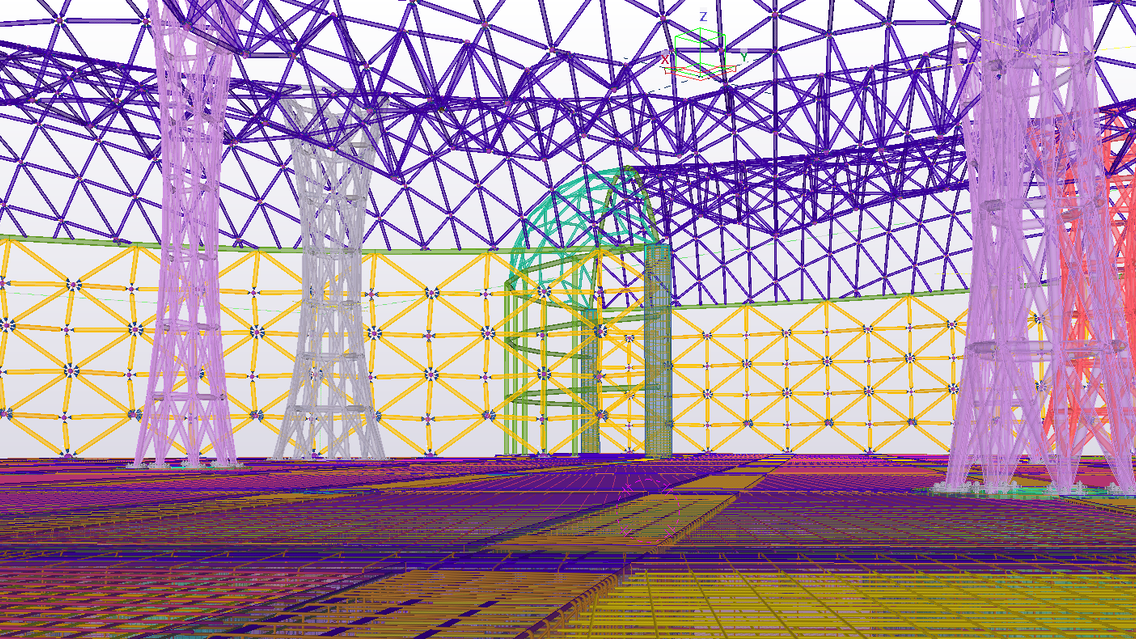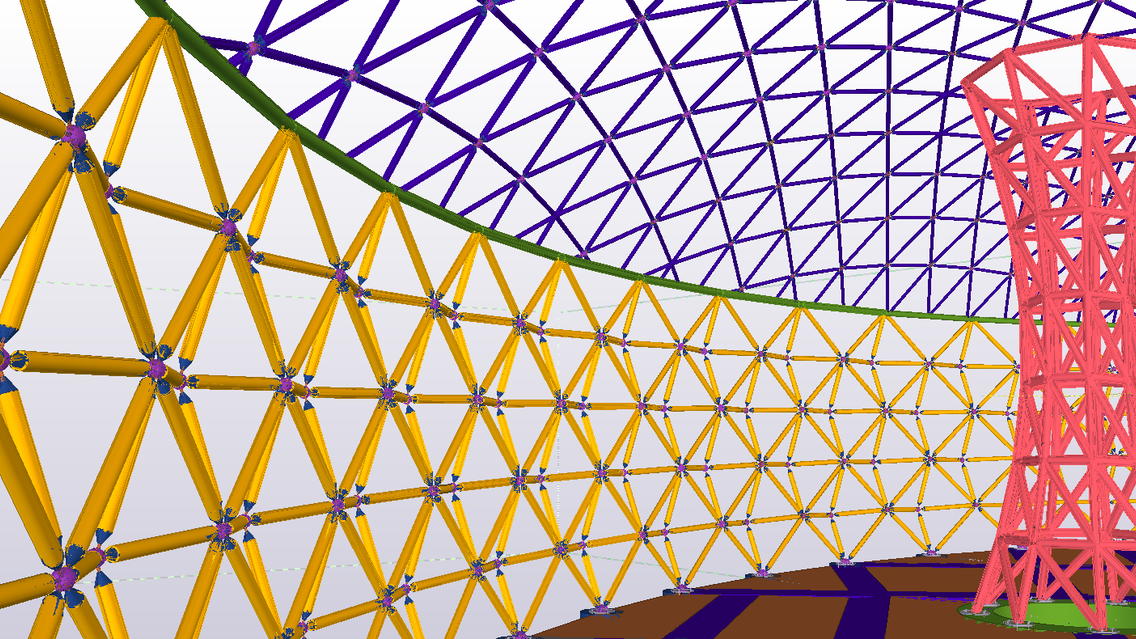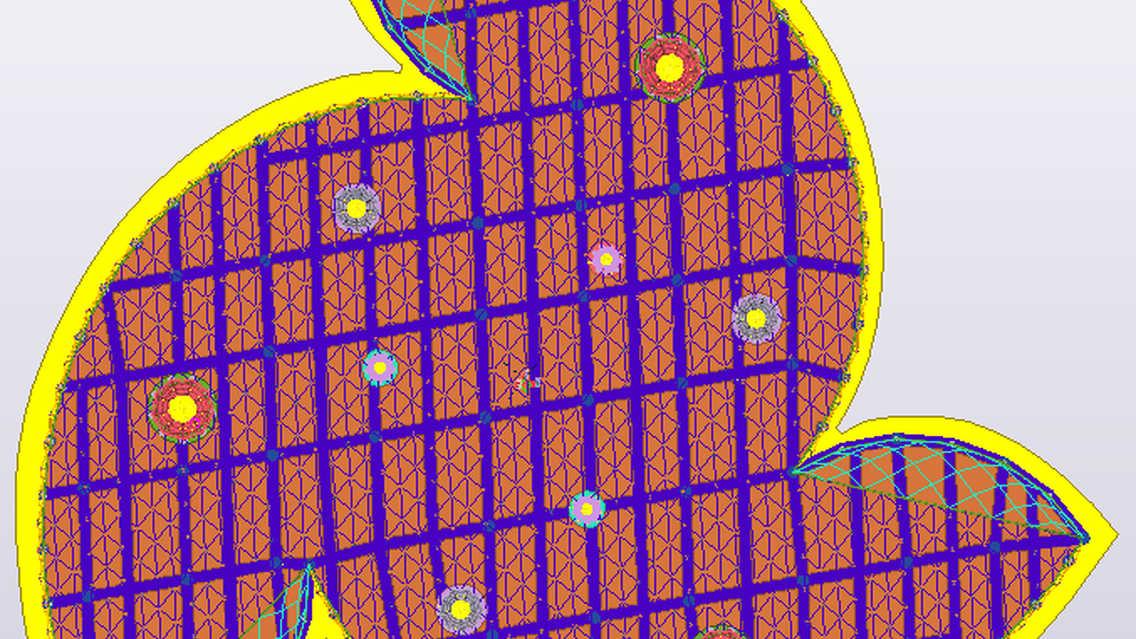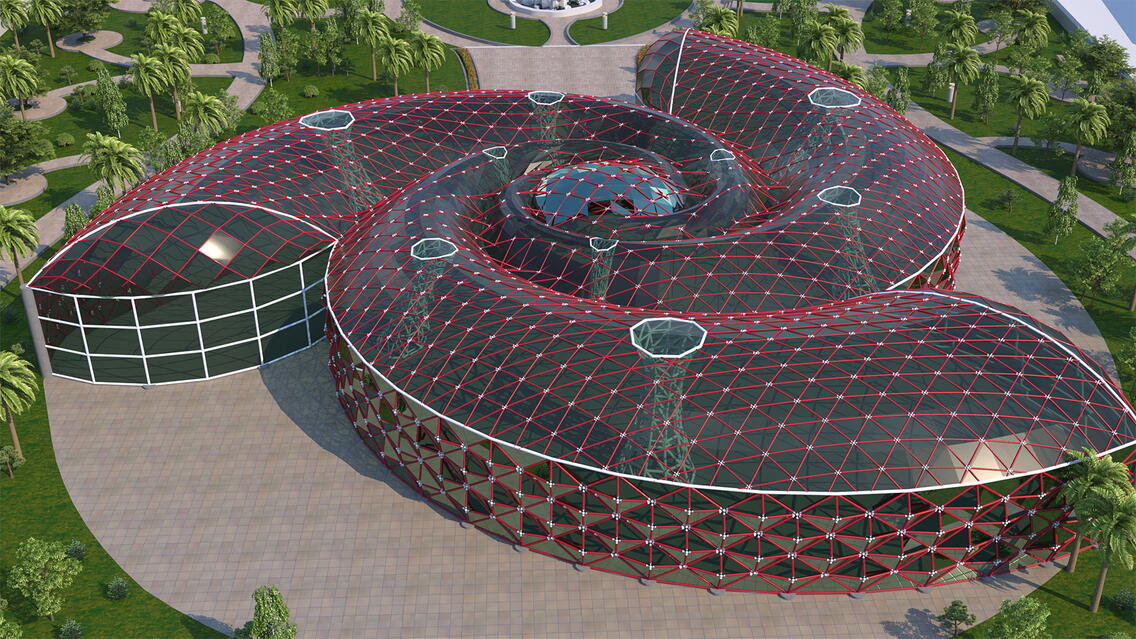BlackSea-TORM is designed as an Expo fair building concept. Increasing energy demand in recent years, decreasing fossil resources and global warming have caused alternative energy needs. In order to increase the sensitivity to alternative energy sources, the windfall form is used in the design of the structure, taking into consideration the renewable and sustainable energy theme. Besides the environmentalist form of the fair center, it is aimed to add socio-cultural richness to the region with its aesthetic beauty. BlackSea-TORM, which includes parking, exhibition and respite areas, consists of 2 floors in total. The curved surfaces covered with transparent panels add spaciousness and modernity.
The fair center having a total area of 19,000m2 and 15.5m total height includes the parking and fair floor, with 7.5m and 8m height, respectively. Structural stabilization is achieved by reinforced concrete circular columns with specific intervals along the curved roof form, 3 steel elephant feet in each, total of 9. The ground floor with reinforced concrete beam slab is placed on the reinforced concrete circular columns in the basement floor. The basement columns are arranged to allow parking and maneuvering of vehicles.
Challenges of Project and Solutions
With this project, it is aimed to model the structure which is difficult to create manually in Tekla Structures. For this purpose, a joint project has been realized by utilizing the interaction of Tekla Structures with different programs. The problems and solutions in this project are summarized below:
• The structure with freeform caused difficulties in modeling manually. In order to remove this difficulty, the structure is constituted with a program that can do parametric modeling.
• The plugin called “GrTekla” is created in the “.Net” environment using TeklaOpenAPI for transferring the parametric model to Tekla Structures. Thanks to this plugin, a link has been established to share the updated model data with Tekla Structures. Thus, the desired freeform model is easily transferred to Tekla Structures environment.
• The element connections on the roof and side surfaces are designed as a Mero System. Although there are many types of connection elements in Tekla Structures, the unavailable of Mero System is lacking. To solve this problem, a spherical form which is not found in Tekla Structures is created in a different program and imported as an item in IGES format, and a "RUFER" which is a semi-parametric connection detail is created in Tekla Structures. With the use of RUFER, the connection elements of a different number of bars in the project are easily created.
Results
In this project, modeling of the structure with a complex geometry is handled with the facilities offered by Tekla Structures. The problems stated above are solved by;
a) Interacting Tekla Structures with different programs,
b) Accessing the building information models with the TeklaOpenAPI library
c) Easily creating connection elements by means of the Custom Component feature. By doing so, both efficient use of time and the interdisciplinary work of the students have been ensured during the project.



